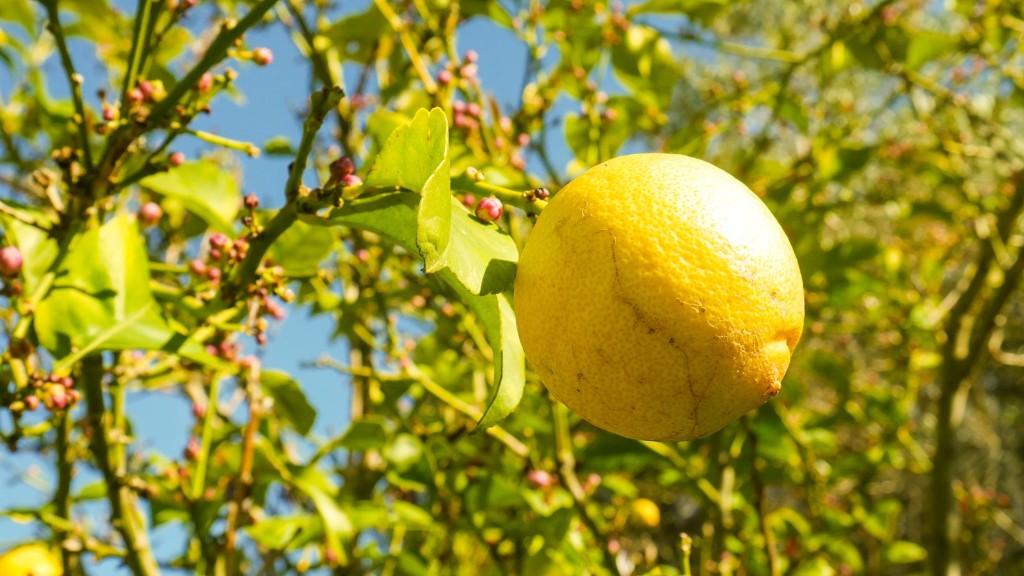Steps To Sprout an Avocado Tree
When talking about gardening and home activities, it is not necessary to have an actual garden; in some cases, a balcony or a window is enough. For the inexperienced, the thought of an avocado tree sprouting from an avocado stone might sound like something out of a fairytale. Believe it or not, it is possible to grow an avocado tree in a rather limited space and even with limited experience. Although it is not easy, with a bit of luck, patience, and commitment, it is a realistic goal that one can strive for.
For starters, skipping the regular grocery store avocado and going for a science-approved avocado is key here. It is important to get a GMO-free variate and not just any ordinary fruit store avocado. In addition to this, the avocado should be ripe and at its peak in terms of ripeness, as this is vital for the sprouting of the seed.
Once the perfect avocado is procured and the seed is taken out, the process of sprouting can start. The fundamental steps are cleaning, drilling, and supporting the seed. Cleaning the seed is important as it might still have some leftovers of the flesh; therefore, it will be beneficial to rinse it before drilling it. Drilling 2 or 3 little holes of approximately 8mm in the seed is necessary; this will serve as a drainage system. In order to help the avocado in this sprouting process, certain tools can be used. These tools include toothpicks and bottles; the optimal way to do this is to place the seed on top of the bottle, using the toothpicks on the sides to suspend the seed right in the middle.
The next step is to fill the bottlenecks with fresh water every day. As time passes, the root that forms from the seed should be visible. In order to guarantee a healthier development of the avocado tree, it is essential to ensure that the root is submerged in the water at all times. When the root starts getting longer, this means that it is time to transplant the seed in a small pot with soil. After doing this, the sprouted tree should be watered every day. Soon enough, the avocado tree will start growing bigger, and the leaves should start appearing. Once the leaves are visible, one should just be patient and let nature take its course while one provides the tree with the fundamentals it requires to thrive.
Incorporating Good Garden Habits For a Thriving Avocado Tree
When it comes to growing an avocado tree, there are a few handy habits in the garden that should be taken into account and incorporated into the gardening process. One of the most basic yet essential tasks is the process of pruning and trimming. This process is important as it helps to promote the overall health of the tree and to keep the shape of the tree in check. Pruning will help to ensure that all of the bark is intact and that it is not dry, as a dry bark can lead to potential tree death. Moreover, this process will help to keep the height of the tree in check when necessary as well.
Another good habit to get into is the process of mulching. This practice should be done right after the avocado sapling is planted in the soil. When mulching an avocado tree, it is best to opt for shredded bark as it can be used to maintain moisture in the soil, in addition to keeping the heat from getting to the roots of the tree. Doing this will deliver a reliable protection from weeds and potential pests, as mulched areas reduce the chance of insect attacks.
Fertilizing the tree is another practiced that should be done on a regular basis. When fertilizing an avocado tree, low nitrogen levels should be preferred for the tree’s growth. Furthermore, when fertilizing, one should be able to provide the tree with the essential nutrients it needs to live and thrive, including magnesium and boron. Also, when it comes to avocado trees, it is considered beneficial to water them deeply and less often, as this helps the tree to build a better root system while producing a healthier tree.
Harvesting Avocados From an Avocado Tree
When pondering over how to sprout an avocado tree, it is important to take into account the fact that the process of harvesting depends on the type of variety one is growing. As a general rule of thumb, it can take up to one and a half years for an avocado tree to bear fruits. Collecting avocados may vary greatly depending on the type of fruit. In cases where the avocado tree produces smaller fruits, the harvesting season will usually be longer. On the other hand, when dealing with larger varieties, the fruit is usually ready to be grabbed, usually from summer through fall.
When it comes to collecting avocados from an avocado tree, it is essential to be gentle. Most certainly, it is suggested to use a ladder if needed and not just to pick the fruit from the bottom portions of the tree. While collecting, it is important to bear in mind that avocados must be picked when they have a dark, green-purple hue. This is the best and optimal color to collect the avocados in. Certainly, it is important to remember to never pick someone else’s fruit without permission, even if it appears to be overripe.
Taking Care of the Avocado Tree
In addition to the good habits that were previously discussed, there are some other practical steps that should be taken in order to help an avocado tree thrive. First and foremost, it is important to allow the tree to grow without interference, therefore stressing the importance of pruning. If a tree starts to grow wildly, it will ultimately require more resources in order to maintain the growth and development of the tree.
It is also important to water the tree the correct way. Too little or too much water can have negative effects on the tree, leaving it vulnerable to upcoming diseases. An adequate amount of water should be given to the tree at least twice a week, considering the season and weather conditions. Giving aerated water as opposed to tap water should be a priority as well.
It is additionally beneficial to provide the tree with some light. The tree requires full direct sunlight exposure in order to stimulate the growing process and to get the tree to reach its optimal shape. The sunlight will also provide the tree with the necessary nutrients it needs in order to be healthy.
As the tree starts to thrive, the process of fertilizing should become more and more frequent. Making sure that the tree is in its peak condition and that it is provided with all the elements it needs will guarantee a healthy and prosperous tree.
Troubleshooting Tips For an Avocado Tree
Unfortunately, even with adequate amounts of care and commitment, an avocado tree might still experience a few issues. Therefore, it is always necessary to have the skills to detect and combat any challenges that might appear. The following are some of the problems a tree might face and their solutions.
If the tree starts to wilt, it can be due to a water deficiency. Therefore, more regular and adequate amount of water should be given to the tree. Wilting can also occur due to high temperatures and strong winds. If this is the case, it is important to provide the necessary protection for the tree.
If one notices yellow leaves, this can mean that there is a lack of nutrients in the soil. Therefore, it might be a good idea to provide the tree with some nutrient-rich elements. Also, yellow leaves can be a result of excessive watering or inadequate sunlight exposure.
When noticing the leaves turning brown, this can mean that there is a fungus present in the soil. To combat this, one should opt for a fungicide and adjust the levels of water the tree receives. In addition, one should keep in mind the importance of pruning.
When dealing with insect invasion and pests, it is important to be aware of the various options available in the market. There are many natural insecticides, as well as homemade solutions, that can be used to prevent or eradicate insects and pests without harming the tree.
Protecting an Avocado Tree During Winter
As avocado trees are commonly designated as subtropical, most of them will be able to survive temperatures of up to 28℉ or lower. But it is necessary to bear in mind that, even though the tree will be able to survive, the growth process might come to a stop at some point. Moreover, when temperatures fall, the roots of the tree can suffer greatly, as a heavy frost can kill the roots and leave the tree unable to carry on.
Therefore, when temperatures start dropping, it is essential to start taking some precautions in order to protect the tree. One can start by adding some inside insulation for the tree. This can be done by covering the tree with a cloth or by placing warmer soil around the tree. Adding some fertilizing elements can help in the insulation process. Moreover, it is essential to make sure that the tree will be given the same amount of water no matter the season; while during the cold season an adequate amount of water should still be provided, over-watering should be avoided to prevent the roots from freezing.
Another great way to keep temperatures high and retain the heat is to deploy weatherizing techniques. This may involve mulching or tying clothes over the tree; these practices help to maintain the desired warmth and to keep the tree safe during low temperatures.
Planting an Avocado Tree in a Pot
Given the fact that some people prefer keeping the tree indoors or just in a small patio due to space constraints, the possibility of planting an avocado tree in a pot is available. When planning to do this, it is important to get the correct pot. Picking a pot that is too large can cause problems for the tree as this might affect the root system, potentially leading to a depleted root system.
In addition, for a tree planted in a pot, the process of transplanting should be carried out more often. This helps the tree to develop a better root system, one that won’t be crowded or congested. It is recommended to do this process every couple of years, or when the size of the tree requires it.
Another important aspect of planting an avocado tree in a pot is the process of fertilizing. When fertilizing a tree in a pot, it is important to add a bit of fertilizer every month. This will serve as a source of minerals and nutrients for the tree and will keep its soil in check. It is important to make sure that the fertilizer is dissolved in the water before pouring it into the pot.
In conclusion, the process of sprouting an avocado tree is not an easy one, but one that is rewarding. It takes patience and commitment from the one caring for the tree, but it always brings forth the joy of seeing a verdant tree bearing delicious avocados. Nevertheless, it is essential for the one taking care of the tree to know the fundamental steps of sprouting, caring, and protecting the tree in order to guarantee its conditions and the production of fruits.




